“The seed rice will be eaten!” was the worried greeting I received on one of my visits to Sierra Leone in the mid-1990’s. I was CRWRC’s West Africa Regional Director at the time, and while no one was yet admitting the country was at war, rebel attacks were growing more frequent even in the communities where CRWRC and Christian Reformed World Missions had programs. After losing their crops to looting and burning, desperate residents were resorting to eating their seed rice in an effort to survive.
|
|
“The seed rice will be eaten!” was the worried greeting I received on one of my visits to Sierra Leone in the mid-1990’s. I was CRWRC’s West Africa Regional Director at the time, and while no one was yet admitting the country was at war, rebel attacks were growing more frequent even in the communities where CRWRC and Christian Reformed World Missions had programs. After losing their crops to looting and burning, desperate residents were resorting to eating their seed rice in an effort to survive.
Unfortunately, this was not an isolated case. All too often, war, drought, disaster and disease can force families in poverty to make decisions that will have long-term negative consequences. Faced with the prospect of hunger and starvation, families may eat the seed for next year’s harvest, cut down trees to sell as firewood, kill off their livestock, or take other actions that will hinder their ability to survive in the future.
With this in mind, CRWRC and several other church organizations began the Foods Resource Bank (FRB) as a Christian response to hunger in 1999. I was blessed to be a part of this from the very early days.
While still in West Africa, I witnessed several occasions where there was a need for greater food security. In the Sierra Leone situation mentioned earlier, the rice was a very specific upland variety that could not easily be replaced if the families ate the seed. We contemplated purchasing the seed from the farmers for about $10,000 and storing it. The farmers could then buy food immediately and would be able to purchase the seed back the following-spring at a reduced price for the next cropping cycle.
But, in a time of significant budget shortfalls at CRWRC, the only available option was to arrange a swap. CRWRC used some of its equity in the Canadian Foodgrains Bank (CFGB) to purchase a container of canola oil, which we then gave to the World Food Programme in exchange for a container of rice. The World Food Programme used the canola oil at a refugee camp near Freetown, Sierra Leone and the rice was distributed to farmers in CRWRC’s program communities.
In another situation, CRWRC’s Keith Syler was working in Niger where our focus was on literacy, but the people also often suffered from frequent periods of drought. Keith grappled with the question “How can we only teach literacy to people who are getting thinner every week?”
In response to this challenge, Keith started a small project where food was given to families in exchange for digging a certain number of zai holes to improve their fields. A zai hole is about 12 inches deep, built on a slope to catch any available rainfall, and filled with compostable material in order to concentrate precious nutrition and water around the seeds.
Plants grown in the zai-holes that year fared considerably better than those planted elsewhere, but the amount of labor involved in digging and filling the holes prevented many from continuing it after the food-for-work project was over. Only about 20% of recipients chose to continue using the technique.
For that 20% of adopters, however, farming was transformed. In a visit to the area ten years later one farmer eagerly shared, “The first year you prepare the zai holes, the second year you dig them again, in the third year the land is soft and by the fourth year you need to think about weeding. We are using zai holes to reclaim land that has been idle for years.”
I was left to wonder, how we could best promote long-term solutions to hunger that people also had ownership of.
I moved back to North America in the late 1990’s to take up a new role as the Director of CRWRC’s Disaster Response Services (CRWRC-DRS). As part of my new responsibilities, I was invited to attend a meeting to discuss the possibility of starting a US-based organization that would resemble the Canadian Foodgrains Bank (CFGB) by tapping into the agricultural resources in North America to help people around the world.
CFGB had already been in existence for several years, and was garnering millions of dollars of support every year through the generosity of Canadian farmers and community growing projects. We now wanted to try something similar in the US.
I arrived at the meeting with images whirling in my head: images of Sierra Leonean famers eating their seed, of Nigerien families digging zai-holes, and of Albertan farmers harvesting a field in record time to raise awareness about global hunger and to donate funds to CFGB.
As we talked about starting a US-based organization, we acknowledged that, while disaster events stimulate abundant generosity, there were already efficient structures in place for shipping food and other commodities during these times of emergency. We decided that we should focus our attention on the more difficult challenge of the unpublicized efforts of people in poor communities to provide for their own families over the long term.
As a result of this meeting, the Foods Resources Bank (FRB) was born in June 1999 with CRWRC as one of its founding members.
Around the same time, CRWRC-DRS was wrapping up its response to flooding in Grand Forks, ND. Ron DeWeerd was completing his CRWRC assignment there and took on a role as FRB’s first field staff member. His task was to promote growing projects where communities in the United States would bring together donations of land, money, time, and prayer to produce a crop, raise animals, or engage in other income-generating activities in order to donate funds to FRB-member projects to increase food security around the world.
Ron began by connecting with people from rural communities that he had met in Grand Forks. As a result, some of the first FRB growing projects were established in Pease MN, Waupun WI and Fremont MI.
Ron recalls an early conversation in Pease where, slightly intimidated by stern expressions and folded arms over bib overalls, he gingerly asked if the community might be able to consider a 20 acre growing project. One farmer retorted “Twenty acres! We don’t want to mess with 20 acres. Would 200 be too many?” This was just the encouragement Ron needed to continue on in new unfamiliar territory.
How God has blessed those efforts over the years! FRB has grown to more than 200 growing projects across the country. Over the years CRWRC’s domestic and international staff have been part of celebrating the harvests in these various places, listening to the powerful stories of growing project participants and sharing the joys and challenges of people around the world increasing their ability to feed their children with dignity all year round.
I’ve been blessed to be a part of it from the beginning. At first, I served as a representative of CRWRC and as chair of the FRB board. I was seconded to FRB in 2002 to join their staff and now serve in the role of Executive Director of Overseas Programming. I regularly get to see the benefits that FRB and CRWRC programming provide to families in need.
Take Agnes Zidana, for example. She is a widow and mother in Mbapi village in Malawi. She used to harvest nine or ten 50kg bags of maize from her one acre of land, and struggled to feed herself and her child year-round. Then she joined the Mbapi Women’s group, which is funded by FRB and supported by CRWRC and their local partner, Nkhoma Relief and Development . Through this women’s group, she learned the importance of using compost on her field as a natural fertilizer and how to build an eco-san latrine. As a result of her improved agricultural skills, she now harvests 20 to 25 bags of 50kg of maize from the same garden.
“She is thankful to FRB and CRWRC for introducing the food security program in the area,” said Nelly Muhanda, the Women in Development coordinator for Nkhoma Relief and Development. “Agnes is able to have food all through the year and does not have to go out and work on other people’s farms for food in the rainy season like she used to do in the past. She has managed to buy three goats from the sale of her surplus maize.”
In the 13 years of FRB’s existence, CRWRC has received over $5 million from FRB to carry out 17 similar programs in 10 countries. In addition, the 15 member organizations of FRB regularly share their equity and contribute towards each other’s programs. CRWRC has been supported by and contributed towards an additional 21 programs in 11 countries.
Congratulations to CRWRC on your 50th anniversary – your “Jubilee”, the Biblical time for restoring people and land. What a joy to work with your home office and overseas staff as together we help farmers access land and skills so that their families can have a reliable supply of food.
The seed rice is no longer being eaten! The next fifty years is calling us to continue the quest to make that the truth in more places in the world.
– by Bev Abma, Foods Resource Bank



